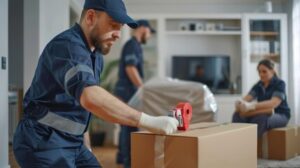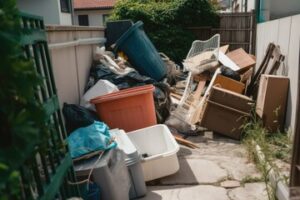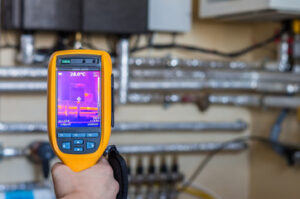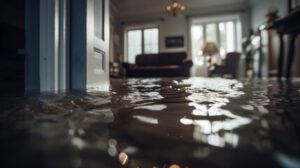Finding a reliable moving company is essential for a stress-free move. The process of relocating can be overwhelming without professional help. A well-organized moving company ensures that all items are handled with care. This minimizes the risk of damage and delays.

Meridian Moving Companies provide a range of services tailored to different needs. Full-service options handle packing, loading, transport, and unpacking. Some companies offer partial services, allowing customers to pack independently. This flexibility helps meet different budgets and preferences.
Professional movers are trained to handle delicate and bulky items. Fragile glassware, electronics, and furniture are packed using specialized materials. Proper packing techniques prevent breakage during transit. Heavy lifting is managed with the right equipment and techniques.
Scheduling a move in advance ensures better availability and pricing. Peak moving seasons often lead to higher costs and limited availability. Early bookings provide access to preferred dates and times. Flexibility with scheduling can also reduce expenses.
Cost transparency is crucial when choosing a moving company. Detailed estimates help avoid hidden fees and unexpected charges. Clear contracts outline service inclusions and exclusions. Accurate pricing builds trust and prevents misunderstandings.
Insurance coverage protects against loss and damage during the move. Basic coverage is often included in the contract. Additional coverage options provide greater protection for valuable items. Comprehensive insurance gives peace of mind throughout the process.
Storage solutions are available for delayed or phased moves. Short-term and long-term storage options accommodate different timelines. Climate-controlled units protect sensitive items from temperature changes. Secure facilities prevent theft and damage.
Inventory management helps keep track of all belongings. Movers create detailed lists before and after loading. This ensures that no items are lost or left behind. Proper labeling simplifies unpacking and organization at the destination.
Communication is key to a successful move. Professional movers provide updates on progress and potential delays. Open communication allows for adjustments and problem-solving. Responsive customer service increases overall satisfaction.
Packing materials and techniques affect the safety of items. High-quality boxes, padding, and wraps protect fragile items. Customized crates and protective covers are used for valuable and irregularly shaped objects. Secure packing prevents shifting during transport.
Experienced movers navigate challenging locations with ease. Narrow hallways, staircases, and sharp corners require strategic planning. Movers use protective materials to avoid scratches and dents. Experience ensures smooth handling in difficult environments.
Long-distance moves require detailed planning and coordination. Routes, fuel costs, and travel times are factored into the plan. Drivers are trained to handle long hours and varying road conditions. Proper logistics ensure timely and secure delivery.
Special handling is required for sensitive and high-value items. Antiques, art pieces, and electronics need custom packing. Climate control and shock absorption protect against damage. Specialized equipment ensures secure transport.
Cross-border moves involve customs clearance and documentation. Movers with international experience handle paperwork and regulations. Knowledge of import and export laws prevents delays. Professional guidance simplifies the process.
Eco-friendly moving companies use sustainable practices. Recycled packing materials reduce environmental impact. Fuel-efficient vehicles and optimized routes lower emissions. Sustainable operations support environmental responsibility.
Corporate relocations require large-scale planning and execution. Office furniture, electronics, and documents need secure transport. Movers work around business hours to minimize disruptions. Professional handling ensures business continuity.
Pet and plant transport requires special care. Temperature control and ventilation keep animals and plants comfortable. Secure enclosures prevent injury during transit. Experienced movers ensure safe arrival at the destination.
Temporary housing arrangements are sometimes needed during moves. Movers coordinate storage and delivery according to housing availability. Flexible scheduling helps align moving dates with housing transitions. Coordinated planning prevents gaps in accommodation.
Fragile and oversized items are handled with specialized equipment. Pianos, sculptures, and large furniture pieces require custom solutions. Movers use dollies, straps, and ramps for secure handling. Proper lifting techniques prevent damage and injury.
Digital tracking systems provide real-time updates. Customers can monitor the location and status of their belongings. Transparent tracking increases confidence in the moving process. Immediate updates allow for quick problem resolution.
Customer reviews and recommendations influence moving company choices. Positive feedback reflects reliable service and customer satisfaction. Negative reviews highlight potential risks and issues. Comparing reviews helps identify reputable movers.
Cost-saving strategies help reduce moving expenses. Decluttering before packing reduces volume and weight. Booking during off-peak seasons lowers costs. Combining shipments with other customers’ loads reduces transport fees.
Personalized service improves the moving experience. Dedicated moving coordinators provide customized advice and support. Coordinators handle scheduling, logistics, and problem-solving. Personalized attention ensures smooth execution.
Special permits may be required for large or complex moves. Movers handle permit applications and regulatory requirements. Knowledge of local guidelines prevents legal issues. Compliance ensures smooth and lawful relocations.
Climate-controlled transport protects temperature-sensitive items. Electronics, wine collections, and fine art require stable conditions. Insulated trucks maintain consistent temperatures. Proper climate control prevents damage from heat or cold.
Custom crating ensures the safety of fragile and valuable items. Wooden crates provide extra protection during transit. Foam padding and shock-absorbing materials prevent movement. Custom solutions secure irregularly shaped objects.
Specialized disassembly and reassembly services simplify complex moves. Large furniture and appliances are taken apart for safe transport. Movers reassemble items upon arrival. Professional handling reduces the risk of damage.
Unpacking services make settling in easier. Movers arrange furniture and place items according to customer instructions. Removal of packing materials completes the process. Professional unpacking speeds up the transition.
Heavy lifting is handled with proper safety techniques. Movers use lifting straps and back supports to prevent injury. Team lifting ensures balanced weight distribution. Safe handling protects both movers and belongings.
Last-minute moves require quick action and flexible scheduling. Emergency services accommodate urgent relocations. Movers adjust resources to meet tight deadlines. Fast response minimizes stress and disruption.
International moves require cultural sensitivity and local knowledge. Movers navigate language barriers and cultural differences. Familiarity with local customs ensures smooth transitions. Respect for cultural norms increases comfort.
Vehicle transport is available for cross-country moves. Specialized carriers secure cars and motorcycles. Climate-controlled carriers protect against weather damage. Secure loading and unloading prevent scratches and dents.
High-security moves require enhanced protection measures. Valuable goods and sensitive documents need extra care. GPS tracking and secure handling provide peace of mind. Confidential handling ensures privacy and safety.
White-glove services offer premium handling and attention to detail. Movers wear protective gear and use clean handling techniques. Furniture placement and fine-tuning complete the experience. High-end service ensures flawless execution.
Community-based movers offer local expertise and personalized service. Familiarity with local streets and regulations improves efficiency. Personal connections enhance trust and reliability. Community ties increase customer satisfaction.
Senior moving services accommodate specific needs. Movers provide extra care and patience with elderly customers. Downsizing assistance and sentimental item handling reduce stress. Compassionate service ensures a smooth transition.
Seasonal moves require weather-related planning. Snow, rain, and heat affect moving conditions. Movers adjust schedules and materials for seasonal challenges. Proper planning ensures smooth execution in any weather.
Flexible delivery windows accommodate changing schedules. Customers can adjust arrival dates based on availability. Movers coordinate revised plans without additional fees. Flexibility reduces scheduling stress.
Safe disposal of packing materials supports sustainability. Movers recycle or responsibly dispose of used boxes and wraps. Reducing waste minimizes environmental impact. Responsible practices support green initiatives.
Transparent contracts ensure clarity and understanding. Service terms, costs, and guarantees are outlined in writing. Clear communication prevents misunderstandings. Well-defined contracts increase customer confidence.



